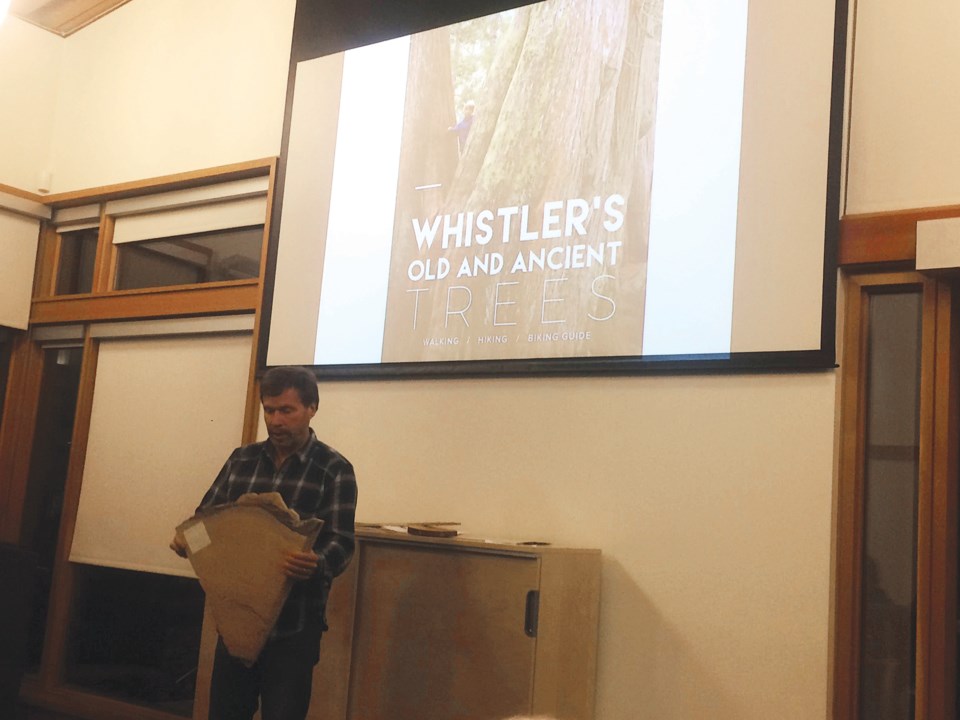The Whistler Naturalists offered the community its first glimpse of a forthcoming mapping project that has recorded old and ancient trees around the resort.
Spearheaded by Naturalists founder and ecologist Bob Brett, the initiative is one of the most in-depth efforts to record and date Whistler's trees. The Naturalists have photographed and cored hundreds of trees around the community, which will be displayed in a slick-looking map that is due for publication next year.
At the non-profit's annual general meeting on Monday, Nov. 19, Brett explained the project's goal. "The reason for all of this and all the coring I've ever done is related to trying to conserve old-growth forest," he said. "It's hopefully written in a way that is neutral; it does mention logging, but it's trying to make the case for why you'd want to leave those trees standing."
Since 2003, the Naturalists have cored more than 1,000 trees at 132 different sites. The map divides the trees by cohort, and includes information about the trees' age and location. It also offers potentially vital information to researchers and government officials.
"These trees, to me, they're like a library ... They are a repository of information," Brett said. "When you core a tree, especially a series of trees on the same site, you can recreate what's happened on that site over the past, literally, 1,000 years or less."
Brett pointed to data he's gathered that shows the majority of trees found in Whistler's valley bottom date back to the mid- to late-1600s, when wildfires swept through much of the Pacific Northwest. He also highlighted the oldest known living tree in Whistler, located in the Callaghan Valley, just metres away from a logging cut block. The yellow-cedar tree is roughly 1,300 years old.
"On government maps, that grove is shown as being between 140 and 250 years old, and it's at least 1,000 years older than that," Brett noted.
"Ancient forests are rare in the world, and I think we have a self-interest in keeping them around," he added.
RMOW official voices support for Naturalists
Attending his first Whistler Naturalists AGM, John Rae, the Resort Municipality of Whistler's (RMOW) manager of cultural planning and development, said the local government is keen to increase its support for the non-profit.
"We are increasingly aware of the importance of (the natural environment to Whistler's culture), and we would like to help, as bureaucrats—and I'm sure our elected officials feel the same way—to make sure that you realize your dreams, your potential, because through those being achieved, the community will achieve its dreams and potential," Rae said from the audience.
The municipal staffer also asked the Naturalists what their "dream budget" would be for the group's Fungus Among Us Festival, an annual event that brings noted mushroom and fungus experts to Whistler to hold talks and forest tours with the public. The RMOW provided $10,000 in grant funding to the non-profit last year. With an increased budget, director Kristina Swerhun said the Naturalists could potentially embark on a DNA mapping project at next year's fungus festival.
For the fiscal year ending Oct. 31, the Whistler Naturalists reported total revenues of $147,661, a net surplus of $1,416.




